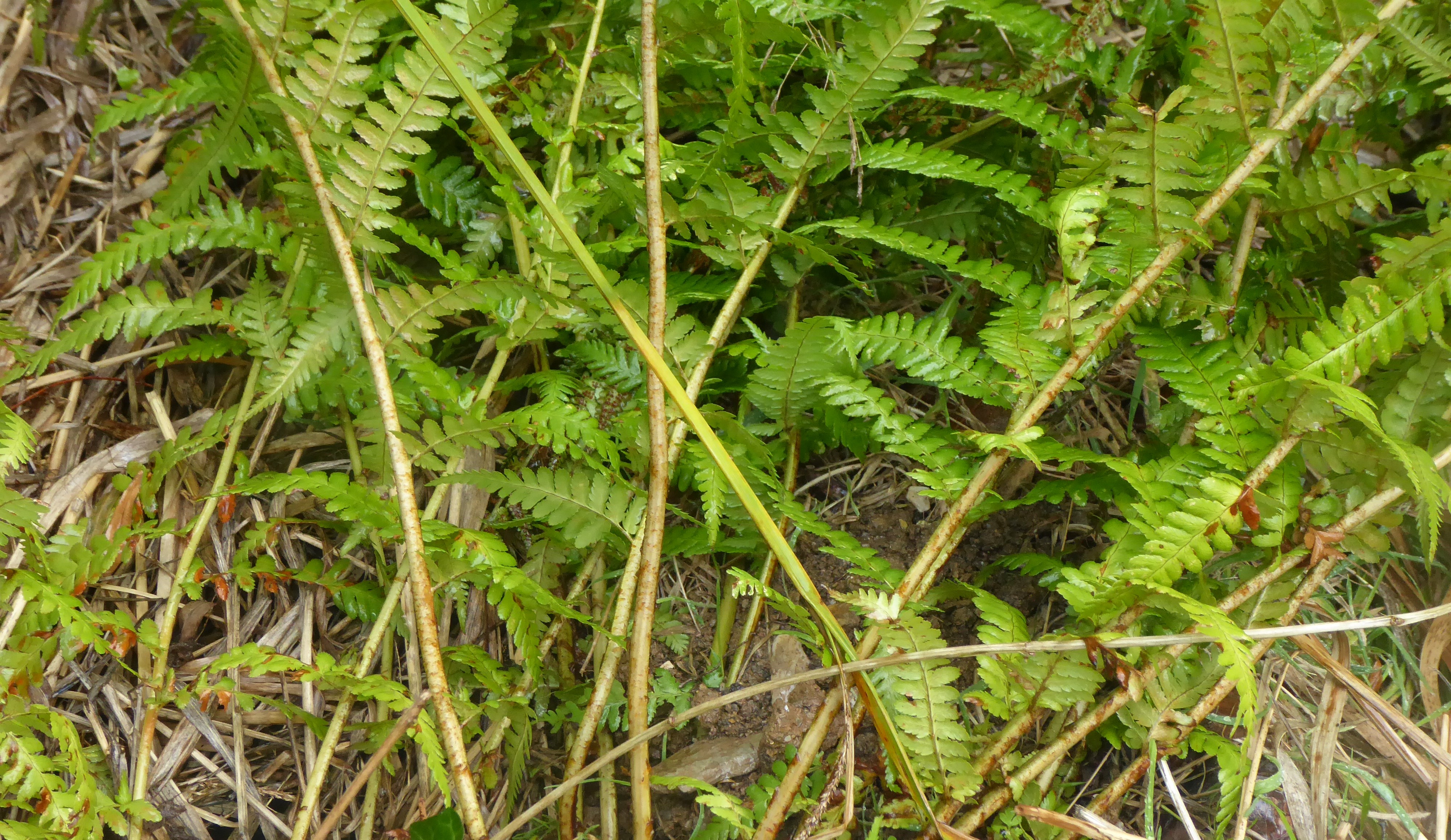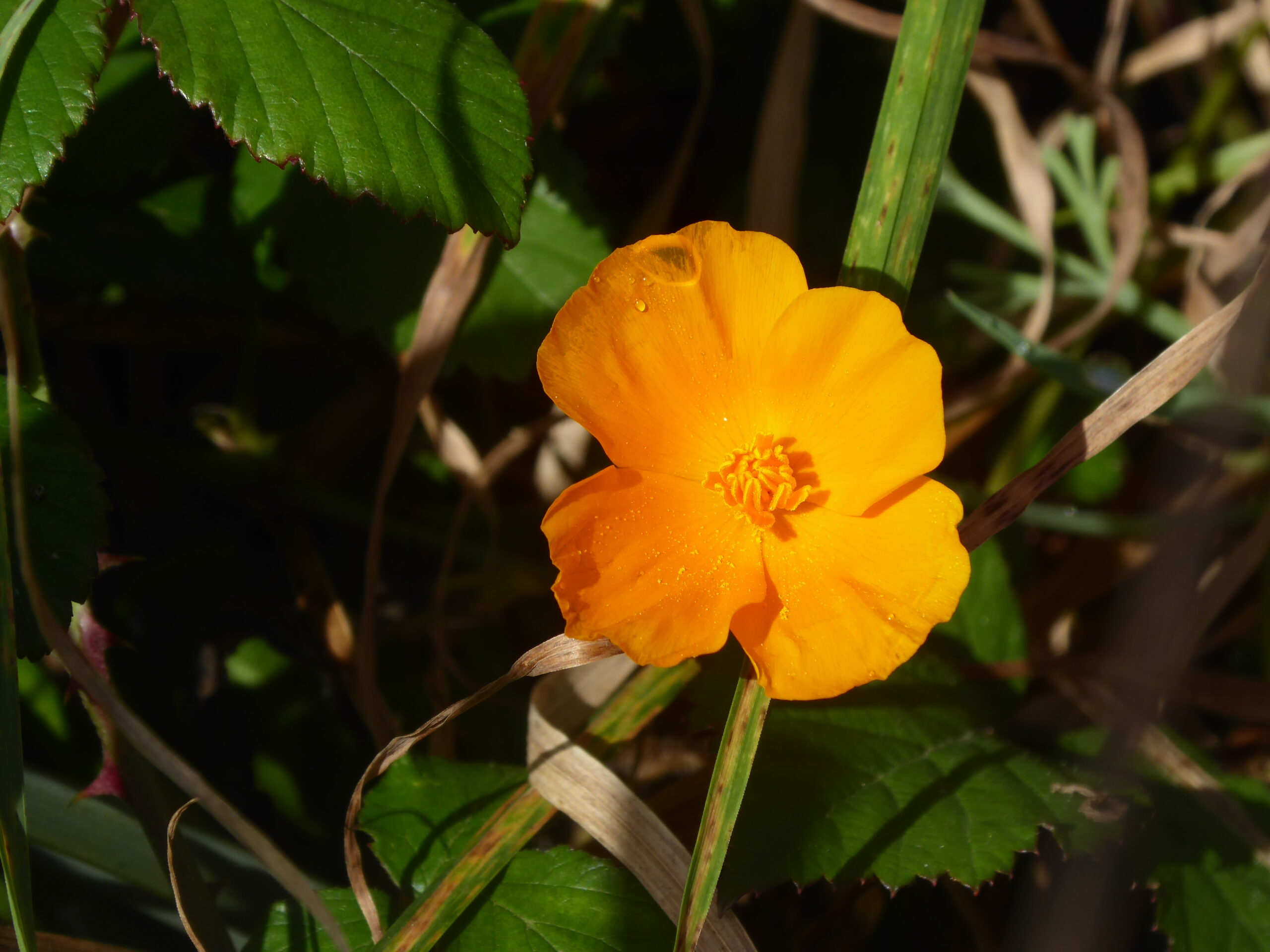This striking poppy is still blooming on the bank of the watermeadow. I think it has come from some wildflower seeds, but it isn’t a native flower (obvious from its name!). The flowers have four delicate petals of a gorgeous apricot colour, distinct from the Welsh Poppy, which is on the primrose end of the spectrum. The feathery foliage is blue-green, but you can’t see it in the picture, because the brambles got in the way. It is either a perennial or annual, that is, it can survive a mild winter, but will die if the climate is harsh.
-
Today in the Watermeadow

The orange pops of montbretia have finished; and purple loosestrife is crisp and brown. The alder leaves are turning brown and curling up. The young alder whose still green leaves you can see in the foreground is at the foot of the bank. It has grown over a metre this year.
-
Today in the Valley
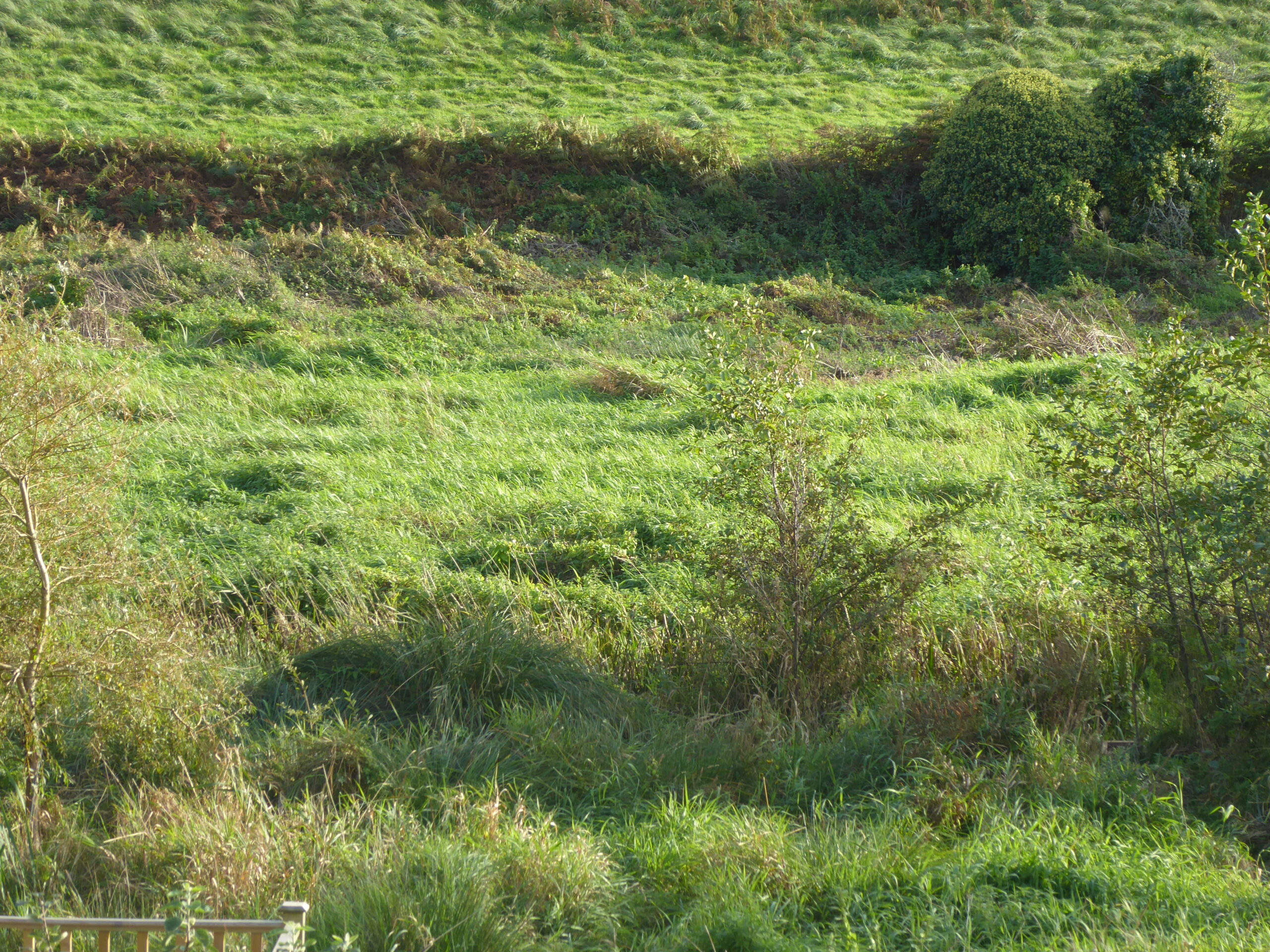
The general look of the valley hasn’t changed a great deal in the last month. It generally looks a bit less lush, with the grass blown down a bit more. The pop of colour that was the purple loosestrife has finished flowering, but the ivy in the top right of the picture is in flower giving a bit of texture to the hedge over the other side.
-
Glistening Inkcap (Coprinus micaceus)
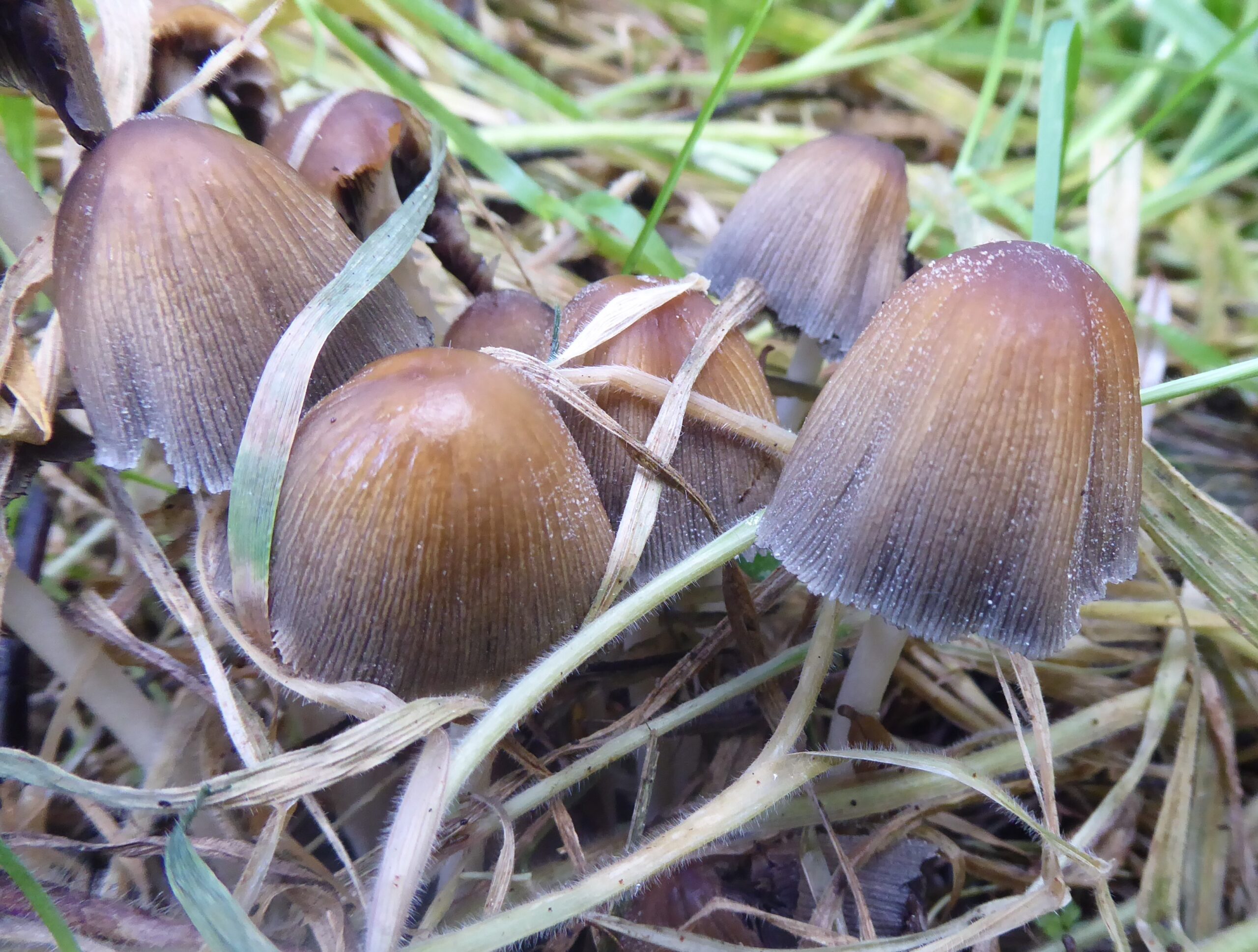
I’m so pleased that the season for fungi is here. I’ve seen two clusters of toadstools in the watermeadow but have yet to identify the other.
Also known as a mica cap because of the dusting of a mica-like substance that looks like salt crystals, the glistening inkcap is one of the easier-to-identify toadstools. The salty dusting and the tawny caps are very distinctive, as is the corrugated surface of the caps. The caps become dark grey towards the edges.
They grow in groups on decomposing wood – stumps, buried wood and logs. These were growing adjacent to a stump that we had been using as a step. These toadstools can, in fact, appear all year round.
They start off almost egg-shaped, opening out more and then the gills deliquesce, or liquify to black ink, hence the name. Glistening inkcaps are edible before deliquescence and must be cooked and eaten immediately or they will begin to liquify. I am happy to leave it to the experts.
UPDATE – I waited for the Ground Ivy to flower – but it didn’t. So, I posted the Ground Ivy anyway because the leaves, reminiscent of water lilies, were so pretty. But today I noticed that the Ground Ivy is blooming. The flowers, see below, are tiny lilac cones.

-
Chasing a dragonfly
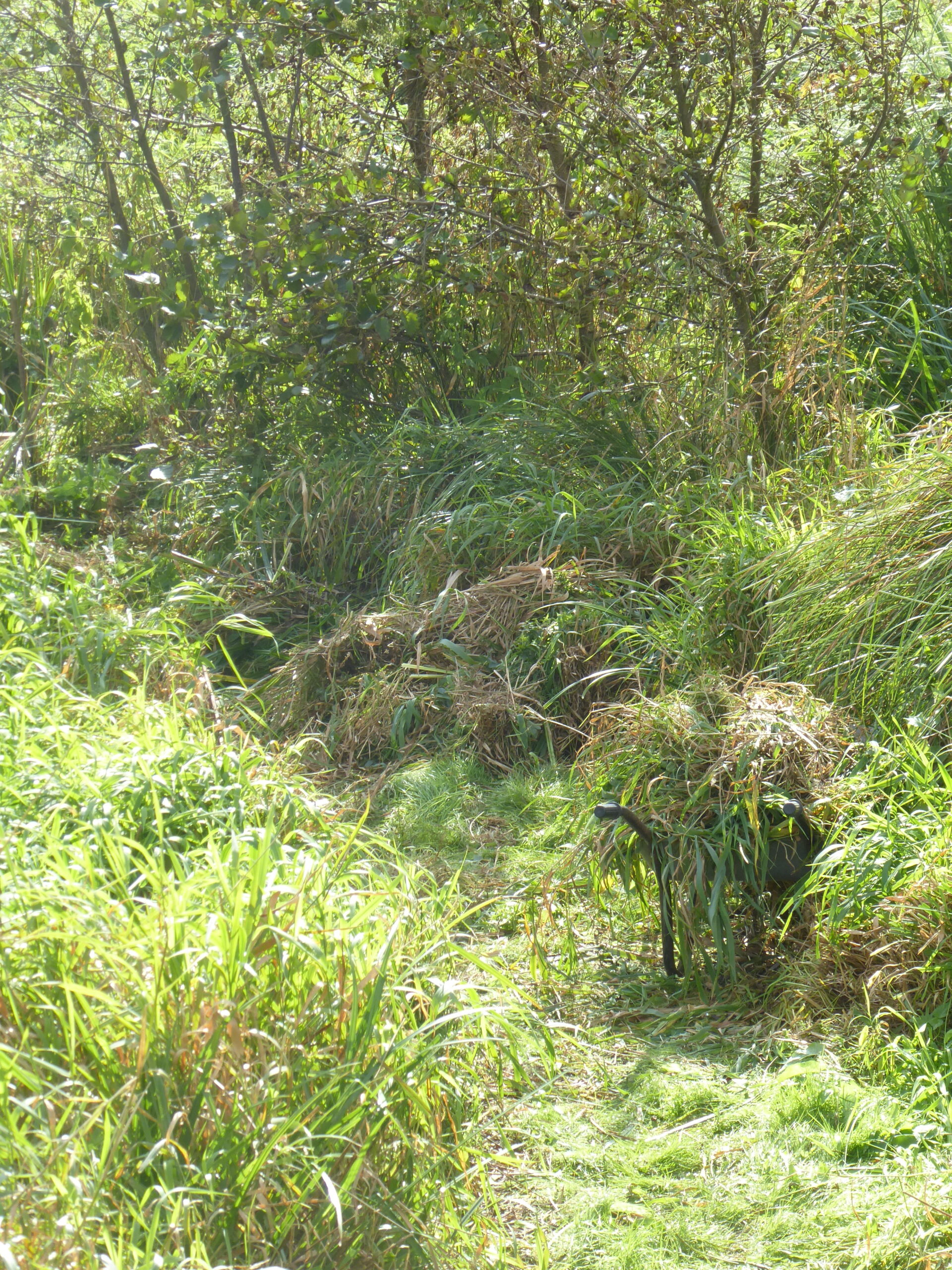
Mr C was clearing the pathways, making them a little bit wider to let the sunshine in over the winter. I spotted a dragonfly and was chasing it round the garden. It kept flying upstream but returning and doing laps of our garden and next door. It was really difficult – as it is with all flying things – until they settle. The dragonfly wasn’t settling. There is a dragonfly in the picture somewhere – out of focus – but I liked this picture, so I decided to post it anyway.
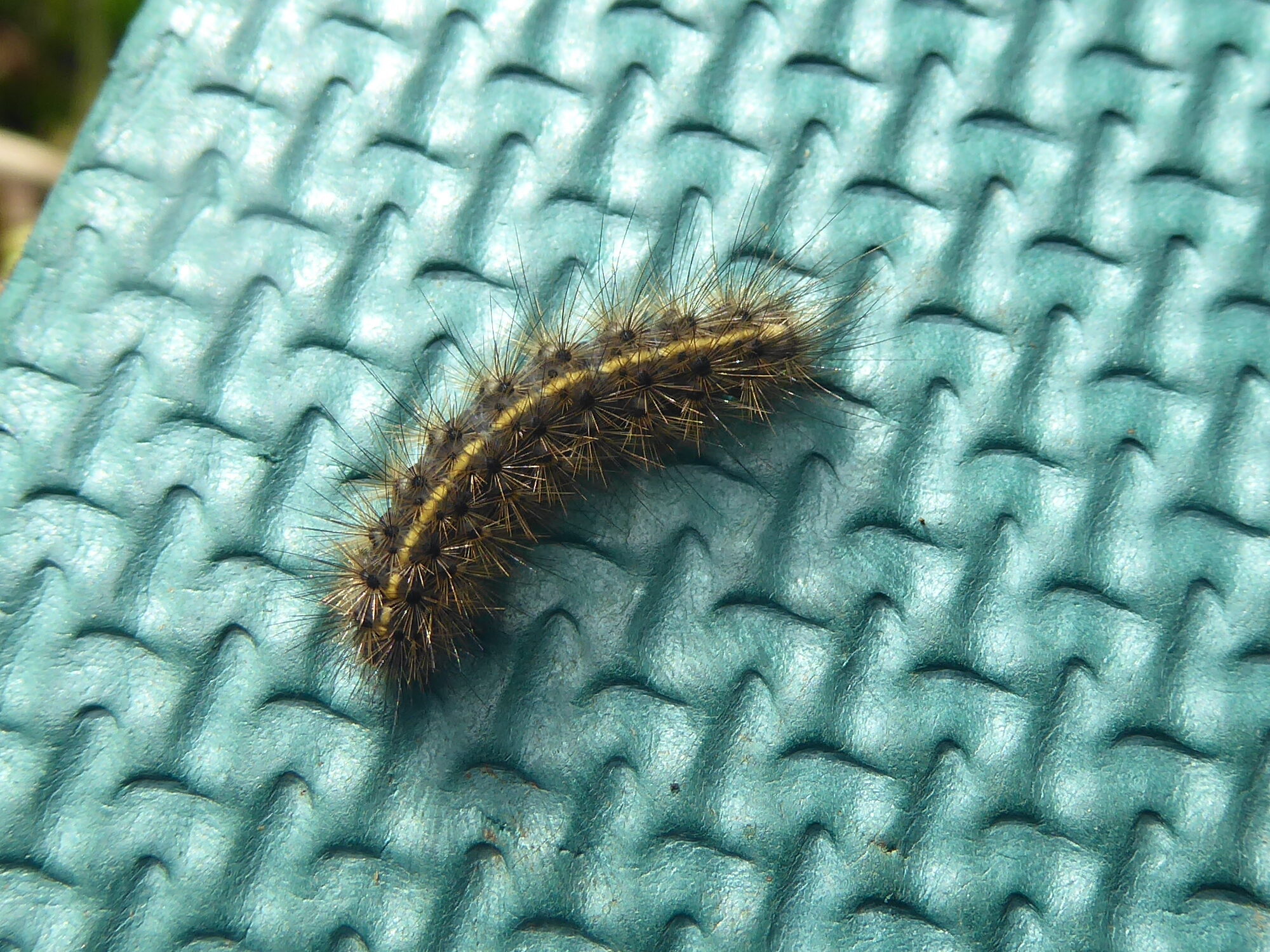
Mr C first spotted this caterpillar in the grass where he was clearing the pathways. When his back was turned the caterpillar made its way onto his stool. With a buff stripe down its back, and its sides studded with black tufts and buttons, it has to be the caterpillar of the white ermine moth. Unfortunately, I can’t count this one, as I have already seen the moth.
-
Ferns
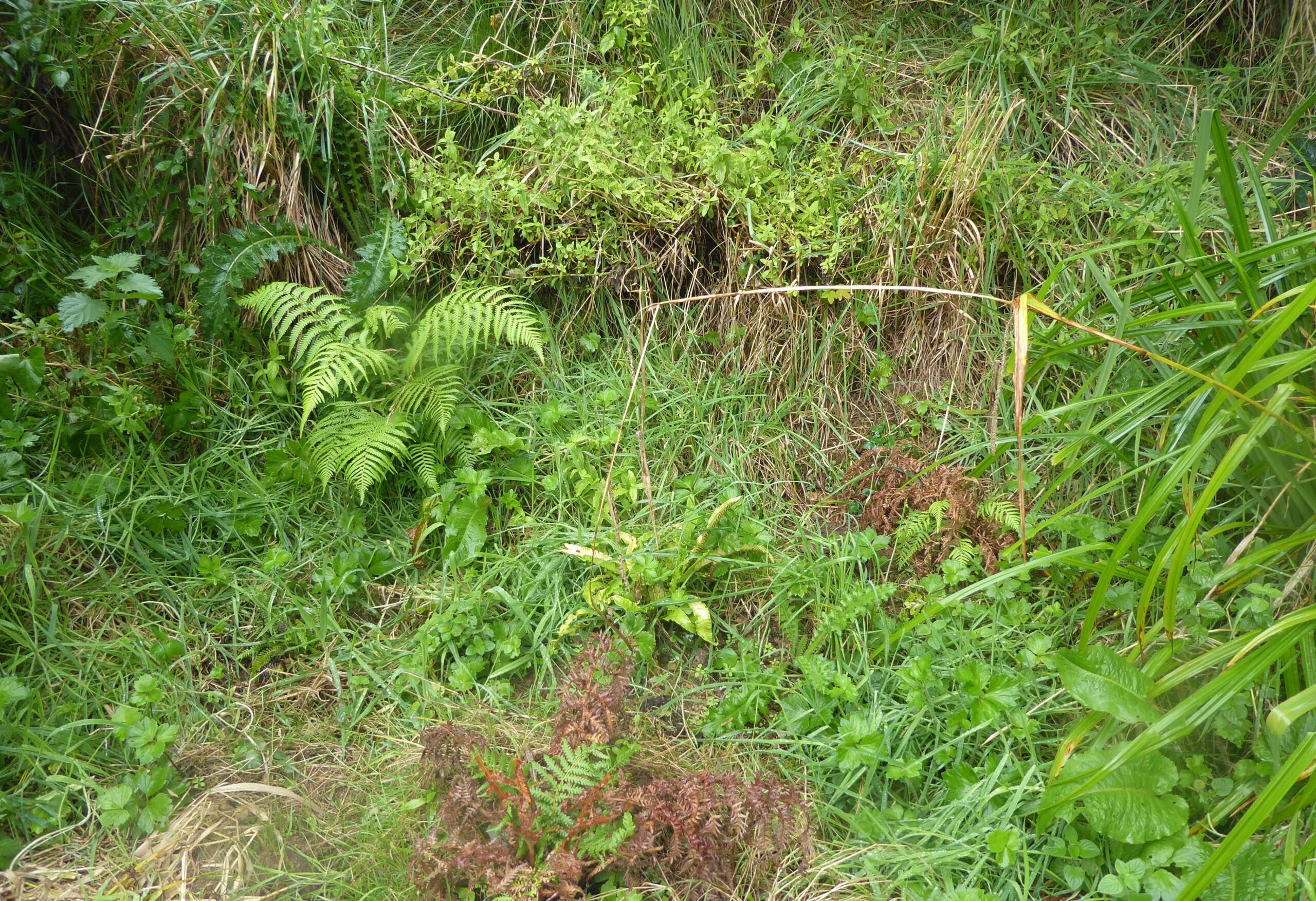
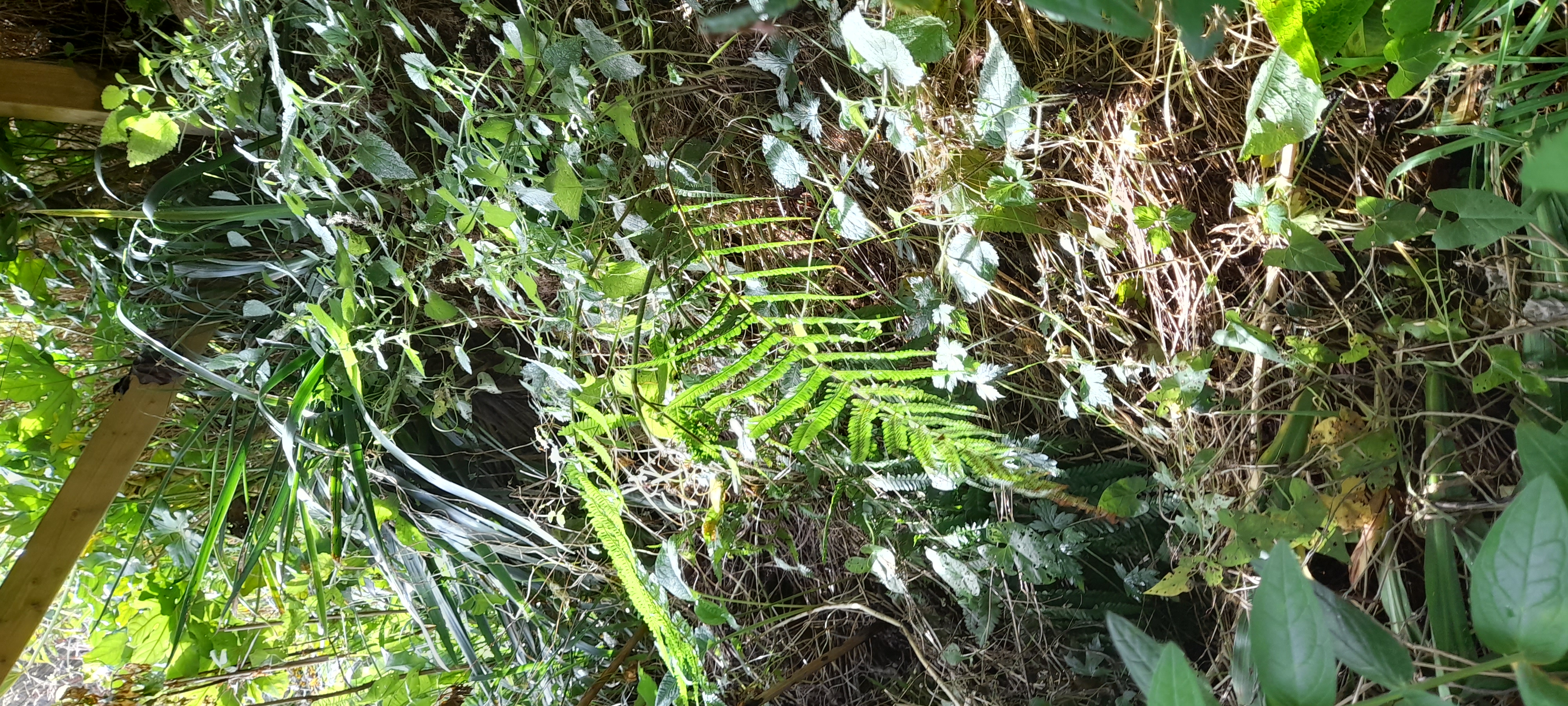
We have a small Fernery, in which we have planted three small tree ferns, a hart’s tongue fern and a Boston fern, but there are other ferns in the watermeadow that were already there.
Left is the bank underneath the decking which looks out over the watermeadow, where everything is left to grow wild, and the mice and voles are left alone. I hadn’t realised that it caught any sunshine at all, but it turns out that the evening sun slants in at this time of year – and there’s another fern.
Below is a Male Fern (Dryopteris filix-mas) growing on a more exposed bit at the foot of the bank. It turns out, as per usual, that there is no one ‘common’ fern. I decided that this was a Male Fern as its little leaflets or pinnules have serrated edges and rounded tips. The sori are the little seed-structures on the underside of the leaves and they are round and in two parallel rows which is another indication that it is a Male Fern.
